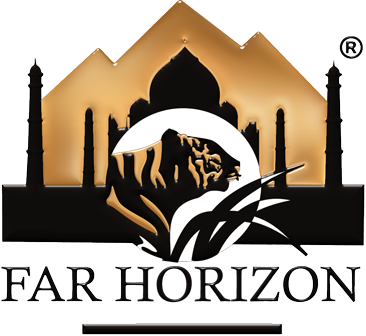Taj, Tribals, Tigers & Leopards
more_vert
Introduction
View the rich birdlife of India at the Keoladeo Bird Sanctuary at Bharatpur. Meet the Royal Bengal Tigers at Ranthambhor National Park and the Spotted Leopards at Jawai, with these Big Cats roaming the semi-arid desert lands of Rajasthan. Combining this with a visit to the ancient capital of India - Delhi, the Wonder of the World - The Taj Mahal, The great Palaces and Citadels of Jaipur and Jodhpur. Finally, ending with the Desert Trails in the Thar Desert at Jamba where you stay on-top of a sand dune, meeting the Bishnoi Tribes! These tribals are famous natural conservators of the desert who defend their wild antelopes - the Chinkaras and the Blackbucks with their lives, as their religion teaches them to do so!
Tour Highlights
- Sightseeing tour of Old & New Delhi
- Sightseeing tour of Agra
- Two visits of Keoladeo National Park (Bharatpur Bird Sanctuary)
- 3 Exclusive Jeep safaris at Ranthambore National Park
- Fort & Palace tour at Jaipur
- 2 Exclusive safaris at Jawai
- Sightseeing tour of Jodhpur
- Jeep Safari on the Dunes at Jamba
- Visit to Bishnoi Tribal village
- Camel/Camel Cart Safari at Jamba
- Visit to Khichan for the Demoiselle Cranes sighting
Destinations Covered
Delhi
The City of GloryDelhi is said to be one of the oldest existing cities in the world, along with Jerusalem and Varanasi. It is the Capital Territory of India and a modern-day citadel that's dotted with ancient monuments.
History and Culture
Legend estimates it to be over 5,000 years old. Over the millennia, Delhi is said to have been built and destroyed 11 times. The oldest alleged incarnation of the city shows up in the Indian mythological epic Mahabharata as Indraprastha.
Agra
The Majesty of the TajAgra is the city of the Taj Mahal, in the north Indian state of Uttar Pradesh. Agra has three UNESCO World Heritage sites, the Taj Mahal, Agra Fort in the city and Fatehpur Sikri on the outskirts of Agra. There are also many other buildings and tombs from Agra's days of glory as the capital of the Mughal Empire.
Bharatpur
The history of Bharatpur dates back to 5th century BC, when the Matsya kingdom flourished here. The Matsyas were allies of the Pandavas in the Mahabharata war. Legends say that the origin of the name Bharatpur is traced to Bharat, younger brother of Lord Ram. Laxman, the other brother, was given the most prestigious position as that of the family deity of the ruling family of Bharatpur. His name also appears in the state seals and coat-of-arms.
Ranthambore
The Great Wildlife AdventureJaipur
The Pink CityJaipur is the largest city in Rajasthan and was built in the eighteenth century by Sawai Jai Singh as India's first planned city. Jaipur is a major tourist attraction amongst Indian as well as international travellers. Jaipur is often called the Pink City in reference to its distinctly colored buildings, which were originally painted this color to imitate the red sandstone architecture of Mughal cities. The present earthy red color originates from repainting of the buildings undertaken for a visit by the Prince of Wales in 1876.
Jawai Bandh
The Land of LeopardsThe Jawai hills located in the Pali district of Rajasthan are known as the leopard hills, surrounded by Jawai Bandh and grasslands while the area is enclosed by the Aravali range. Considered among one of the lesser known tourist destinations, this place deserves much more attention than it gets.
Jodhpur
A Rhapsody in BlueLocated on the foothills of a sandstone hillock, the city of Jodhpur seems like an oasis in the vast desert. The city is known by three names as the "Sun City" for the bright, sunny weather it enjoys all year. It is also referred to as the "Blue City" due to the vivid blue-painted houses around the Mehrangarh Fort.
Jamba, Thar Desert
The Serene Desert LandscapeIn the distant reaches and vast expanse of the Thar Desert, far off the beaten tourist trail is the unique village called Jamba. It is located in Phalodi Tehsil of Jodhpur district in Rajasthan, India. This is a perfect place to get away from the big cities and enjoy the solitude of the desert life.
Detailed Itinerary
- Day 1 Arrive Delhi
- Day 2 Delhi
- Day 3 Delhi To Agra By Road: 220 Kms/ 4 Hour Drive
- Day 4 Agra
- Day 5 Agra To Bharatpur By Road: 60 Kms/ 1 Hour Drive
- Day 6 Bharatpur to Ranthambore by train (Jan Shatabdi train no. 02060 at 1450/1713 hrs.)
- Day 7 Ranthambore
- Day 8 Ranthambore – Jaipur (Approx. 180 km/4 hour drive)
- Day 9 Jaipur
- Day 10 Jaipur – Jawai (Approx. 380 km/7-8 hour drive)
- Day 11 Jawai
- Day 12 Jawai – Jodhpur (Approx. 150 km/3 hour)
- Day 13 Jodhpur - Jamba
- Day 14 Jamba
- Day 15 Jamba – Jodhpur Drive & Fly To Delhi (AI-476 At 1455/1615 Hrs.)























